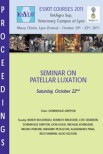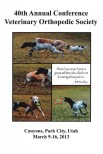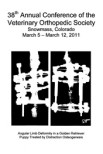Patellar luxation (PL) is a common orthopaedic condition in dogs. This study aimed to evaluate the incidence and cause-specific mortality rate, age at diagnosis, and risk factors for medial PL (MPL), lateral PL (LPL), and bidirectional PL (BPL). Other diagnoses in dogs with PL were also explored.
The study population included just over 600,000 dogs insured by Agria Pet Insurance in Sweden (2011-2016). There were 2726 dogs with PL. Medial patellar luxation affected 90 % of the dogs with PL, followed by LPL (5.9 %), BPL (2.4 %), and unspecified PL (1.6 %). The median age at first diagnosis during the study period was 2.8 years for MPL, 2.7 years for LPL, and 1.5 years for BPL. In total, 168 (6.2 %) of the dogs with PL had cruciate ligament rupture. There were substantial breed-specific differences in the risk of PL: almost all breeds at increased risk of MPL were small-sized, while several of the breeds at increased risk of LPL were large-sized. The breeds at high risk of BPL varied in size.
Females had an increased risk of MPL (RR 1.2, 95 % CI: 1.1-1.3, p < 0.001) and a decreased risk of LPL (RR 0.72, 95 % CI: 0.51-1.0, p = 0.042) compared to males. In total, 116 dogs were euthanised due to PL and the breeds with the highest risk of PL-related euthanasia were the Pyrenean mountain dog, Dogue de Bordeaux, and German pinscher. The median age for PL-related euthanasia was 2.2 years.









